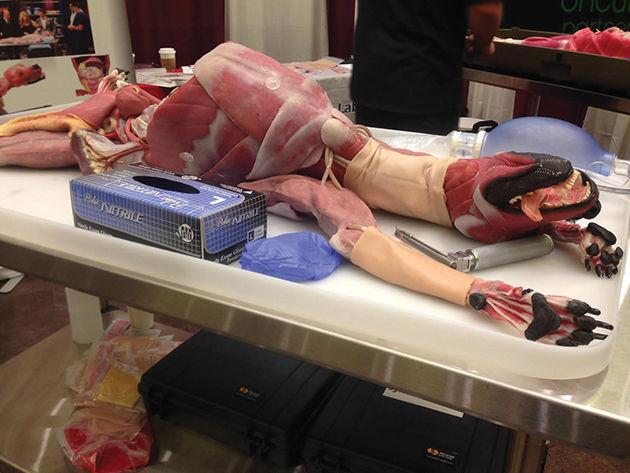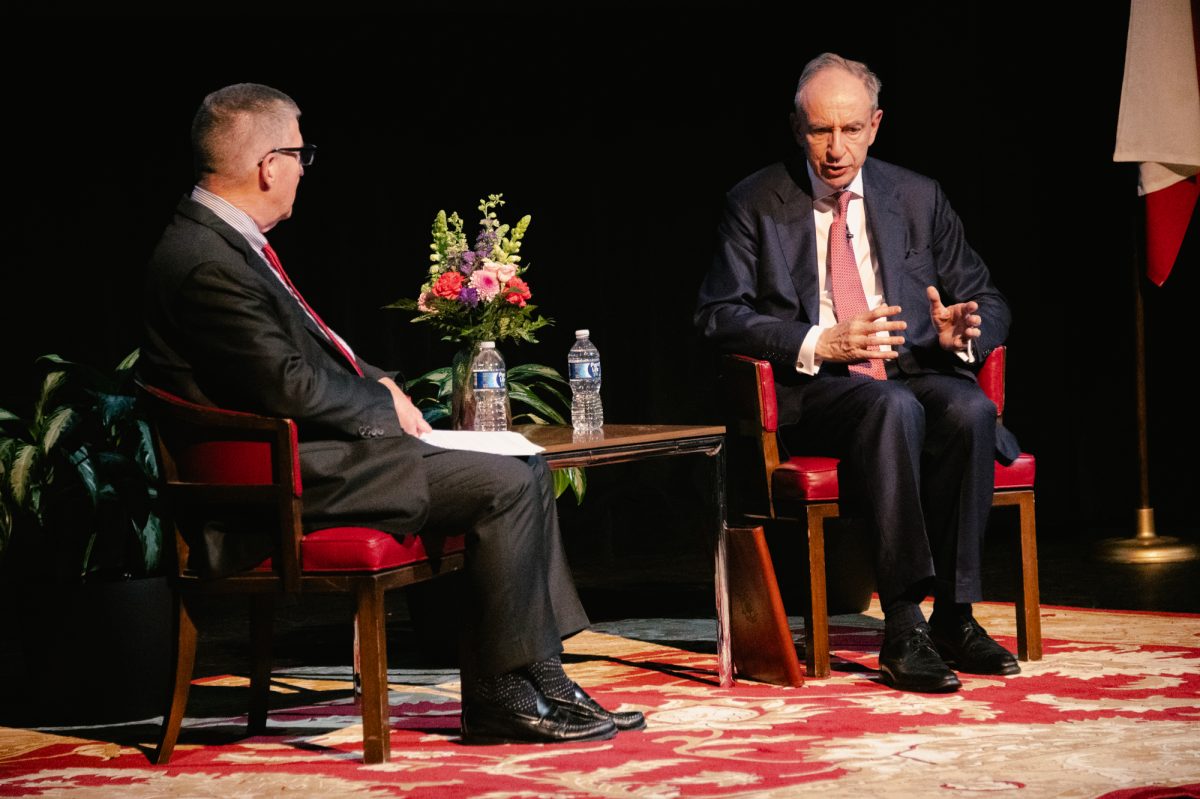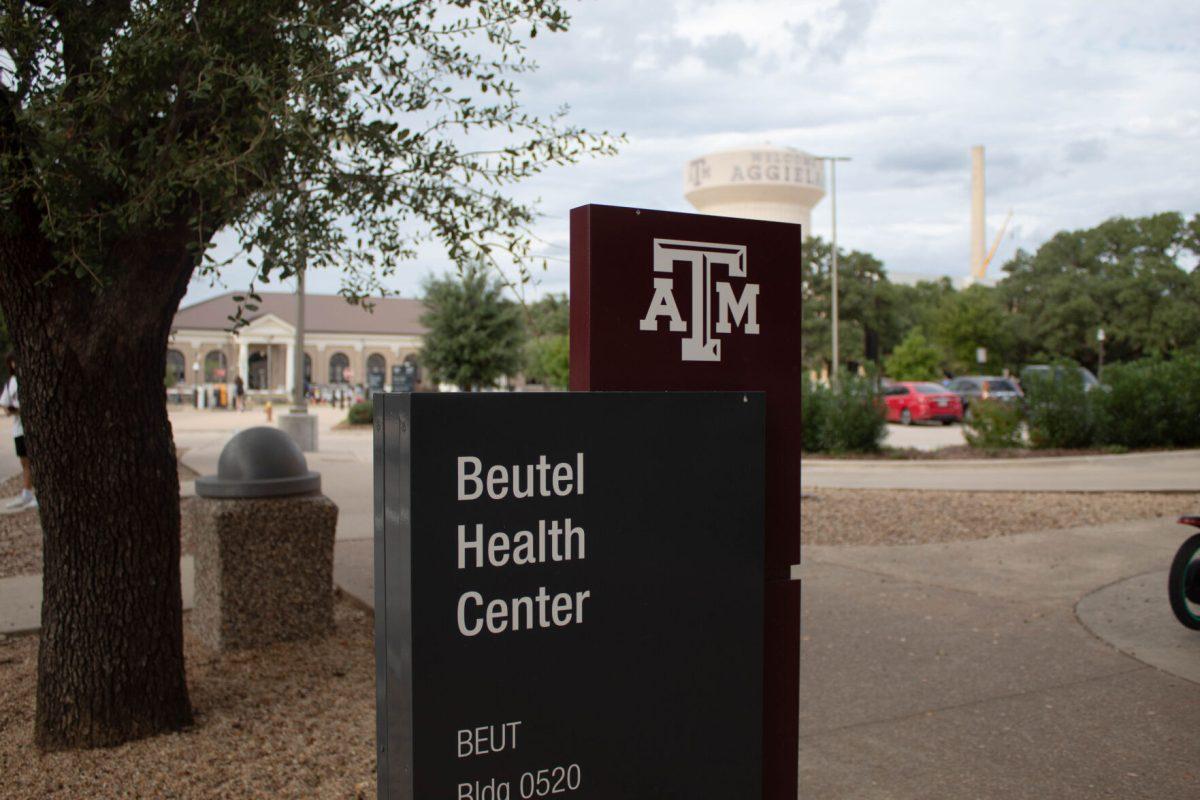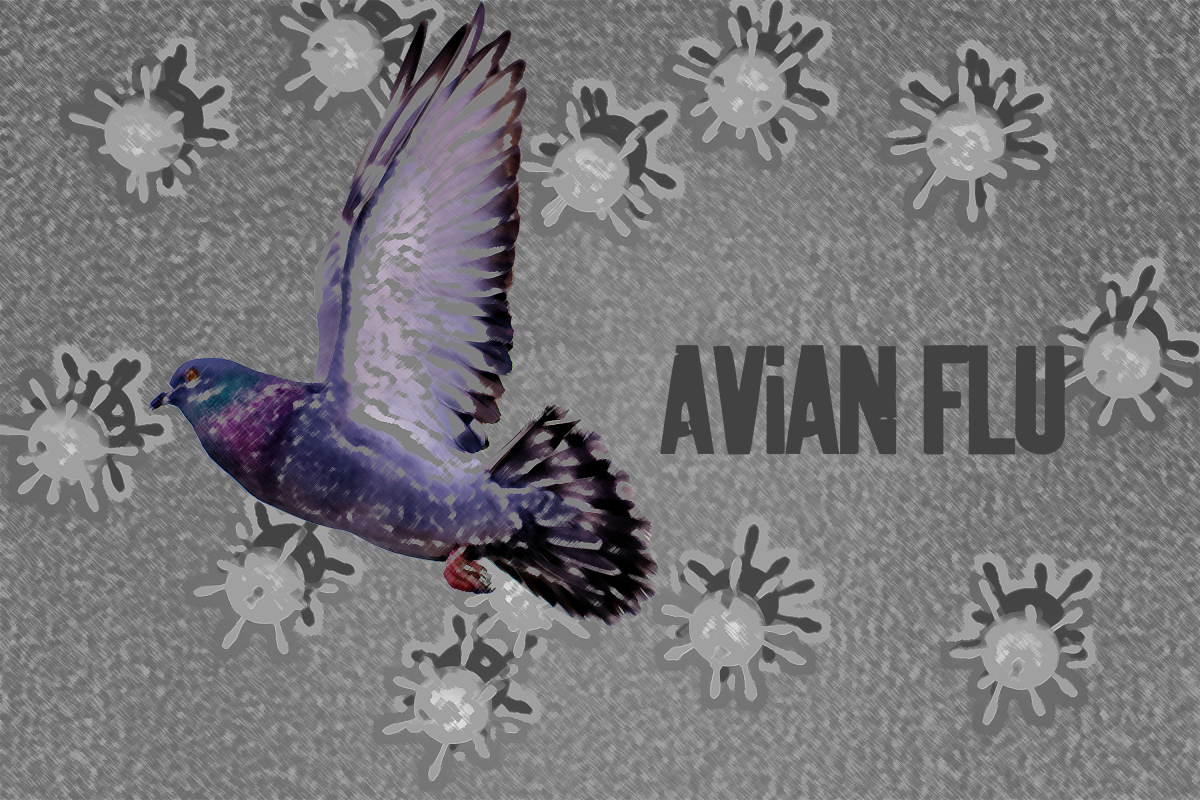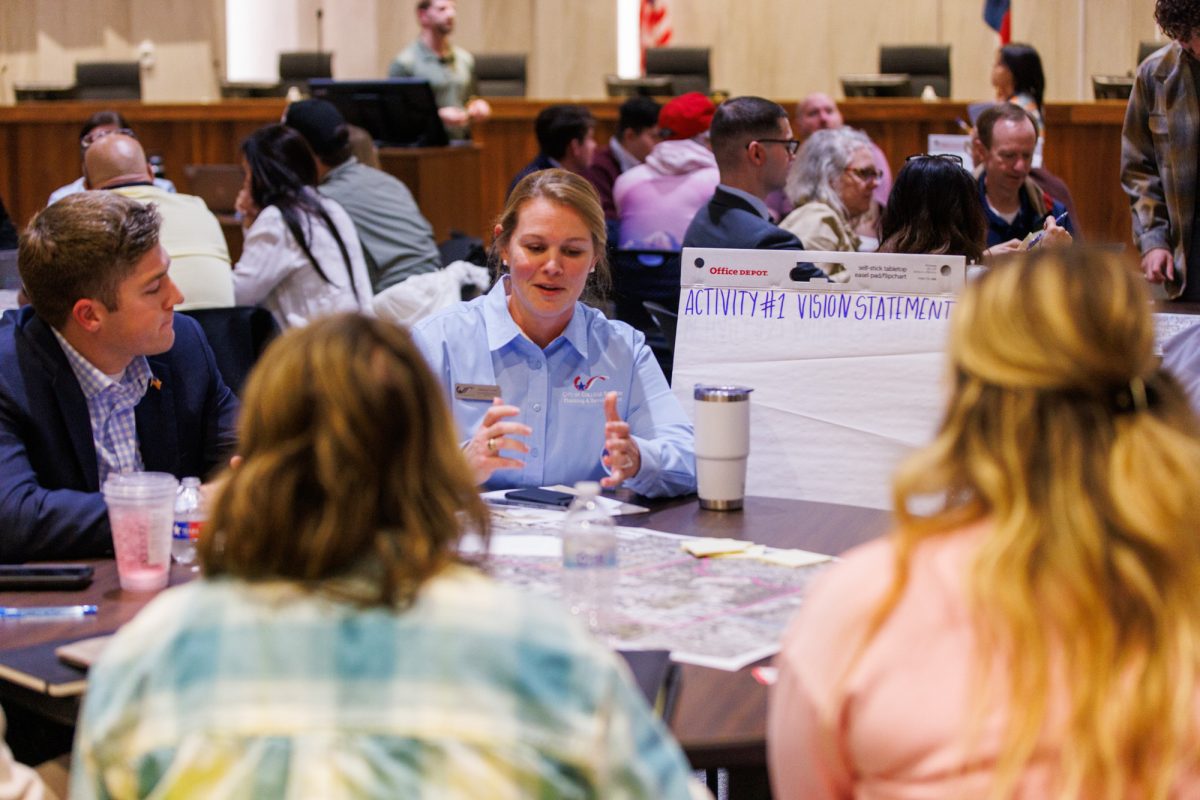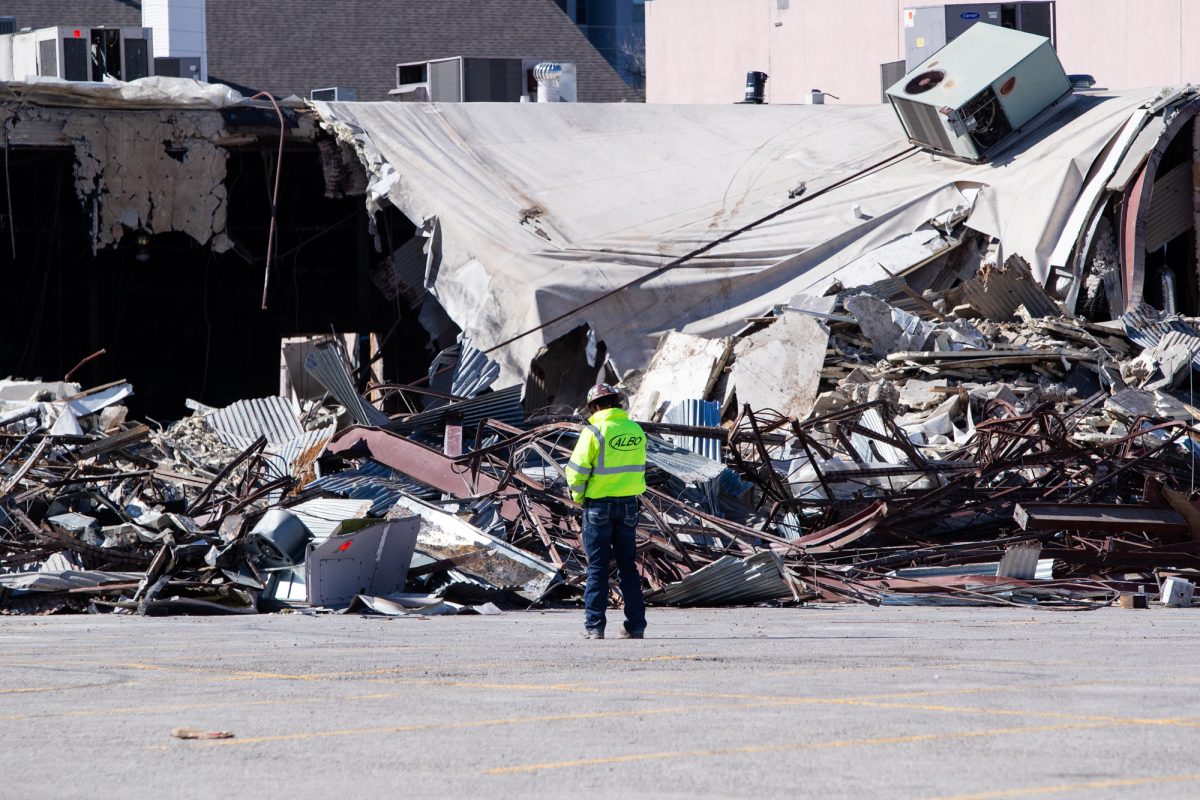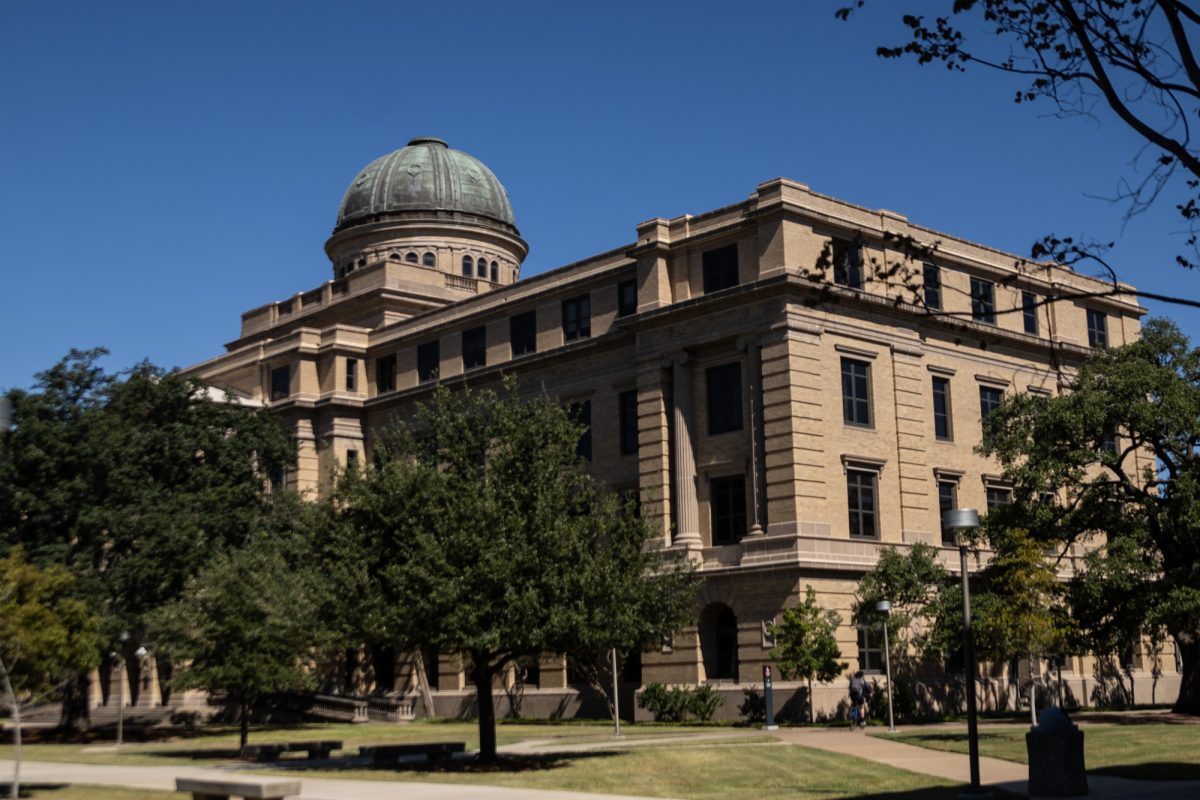Veterinary students at Texas A&M now have the opportunity to practice surgical veterinary procedures — not on live animals, but on synthetic ones.
Texas A&M’s vet school was the first to purchase 15 of SynDaver Lab’s breathing and bleeding live animal replacement surgical trainers to be used in the 2017 to 2018 school year. SynDaver Labs manufactures synthetic human and animal trainers made from water, fiber and salt. The company’s synthetic humans have been featured on shows like MythBusters, Grey’s Anatomy, CSI and Cross Bones. The synthetic canines will now be used to train future veterinarians before graduation.
This weekend, more than 360 professionals in the veterinary industry from across the globe gathered in College Station for the inaugural Veterinary Innovation Summit hosted by Texas A&M’s College of Veterinary Medicine and Biomedical Sciences, and the North American Veterinary Community. During the summit, participants were able to learn more about innovative teaching methods, such as synthetic canines.
Christopher Sakezles, SynDaver CEO, said the synthetic animals became commercially available in January. Other universities will likely begin purchasing the canine models in the near future.
”It’s a great seal of approval,” Sakezles said. “When you have a top-10 university like TAMU pick it up it really helps get the word out to other schools. Then the other schools take it more seriously, not that they weren’t already; but when you see a major school pick it up and integrate it into the curriculum, people notice.”
Karen Cornell, associate dean for professional programs at A&M, said the synthetic canines will offer veterinary students an opportunity to practice their skills in the classroom before they practice on live pets.
“They’ll be able to practice procedures and be more proficient in those procedures before they need to perform the procedure for a client-owned pet,” Cornell said. “Pet parents should feel more comfortable that their veterinarian will have more experience with a greater number of types of surgical procedures.”
Sakezles said the initiative to create the canines came from a request by the University of Florida that SynDaver create a canine version of the synthetic human UF’s medical students were already using. While designing the synthetic canine, Sakezles collaborated with David Danielson from UF. According to Sakezles, when operating on the synthetic canine for the first time, Danielson made a mistake and caused a deep bleed in the dog’s internal organs. Operating on the synthetic canine felt so real, Danielson began to shake.
“The techsters are saying, ‘Dr. D, just turn it off and start over again.’ He was like, ‘No. I’m going to do this,’” Sakezles said. “It was interesting to see him do that, and it was really cool seeing the students do that. I’m really proud that I can give them that experience because I know it’s going to make them life savers on the other side.”
Kristin Chaney, a clinical assistant professor at Texas A&M, said collaboration on teaching methods like what took place to create SynDaver’s synthetic canine is a valuable tool for the future of veterinary medicine.
“It begins with an idea that stems from a necessity,” Chaney said. “First, you’ve got to have simulation and practice. We want our students to take into general practice knowledge of procedures that really can be done in our classes.”
Cornell said information presented at the summit this weekend made her realize how committed Texas A&M is to meeting the needs of pet owners.
“Data shows that 70 percent of pet owners consider themselves pet parents,” Cornell said. “This demonstrates how really committed to their animals pet owners are and we are committed to preparing our students to best meet their needs.”
Synthetic schooling
May 1, 2017
Photo by Photo by Rachel Knight
These synthetic canines will allow vet students to practice surgical procedures in the classroom before doing so on live animals.
0
Donate to The Battalion
$810
$3500
Contributed
Our Goal
Your donation will support the student journalists of Texas A&M University - College Station. Your contribution will allow us to purchase equipment and cover our annual website hosting costs, in addition to paying freelance staffers for their work, travel costs for coverage and more!
More to Discover




